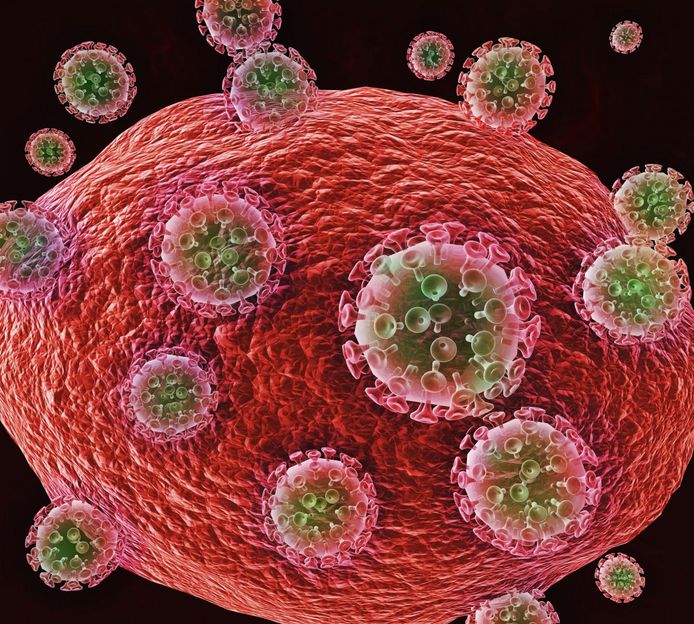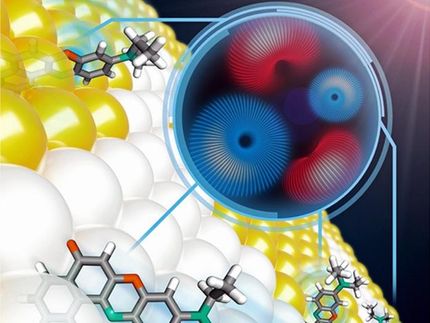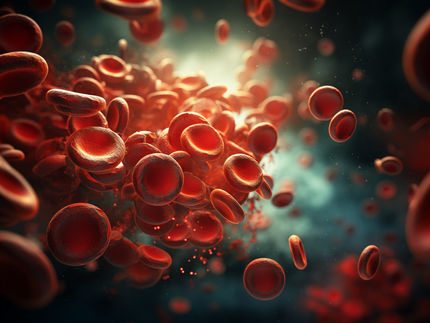New fluorescent probes help solve cell membrane mystery
Advertisement
Scientists from Japan, India and the U.S. have observed raft domains -- active sections of the cell membrane with special groups of molecules -- in live cells for the first time. Their findings will be published in Nature Chemical Biology.

This new finding enables researchers to investigate how toxins, bacteria and viruses invade cells. (The image is an illustration of HIV/AIDS viruses surrounding and attacking a host cell.)
Credit: William Roberts / 123rf
"The existence of special membrane domains, called raft domains, has been assumed for over 25 years, but was never found to actually occur in living cells," said Dr. Naoko Komura of Gifu University, the first author of the paper.
To solve this enigma, the team decided to look at the behaviours of gangliosides. Gangliosides are lipid molecules that were proposed to play key roles in numerous biological processes, including the formation of raft domains, the entry of toxins into cells and chemical signal reception.
However, scientists only vaguely understood how gangliosides work because, until now, they lacked probes that accurately track ganglioside movements. Previous analogs failed because they could not mimic the behaviours of native gangliosides even in artificial model systems.
Instead of just attaching a fluorescent marker to a ganglioside, the team chemically synthesized four whole gangliosides with fluorescent markers attached at specific locations.
Using these new fluorescent analogs, combined with unique high-definition, single fluorescent-molecule imaging, the team was able to directly document specific ganglioside actions in a living cell for the first time.
They observed how gangliosides form raft domains with cholesterol and a protein, called CD59, which belongs to a special class of receptor proteins, called GPI-anchored receptors. It turns out these molecules interact transiently for only tens of milliseconds (1/100-1/20 of a second) to form a raft domain, and then quickly move to the next task. That's why no one could observe raft domains in real cells before.
"Such dynamic behaviours were difficult to find using normal techniques, and our findings were made possible by single-molecule tracking of new fluorescent ganglioside probes," said Kenichi Suzuki of the Institute for Integrated Cell-Material Sciences (WPI-iCeMS) and the paper's co-author. "Our findings established the concept of dynamic raft domains: their constituent molecules assemble to form raft domains, do their jobs within several tens of milliseconds, and then move away for the next assembly to perform the next task."
Now, researchers can begin to investigate further how toxins, bacteria and viruses invade cells through these raft domains.




























































